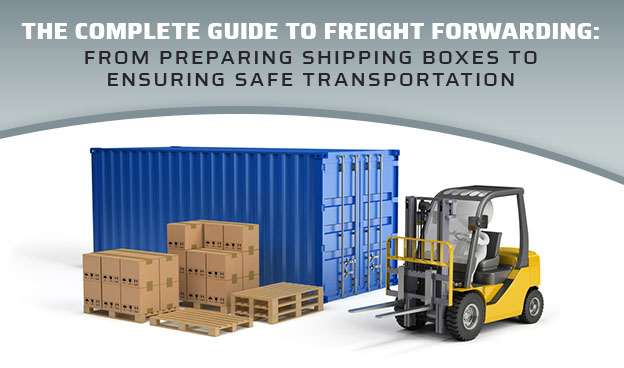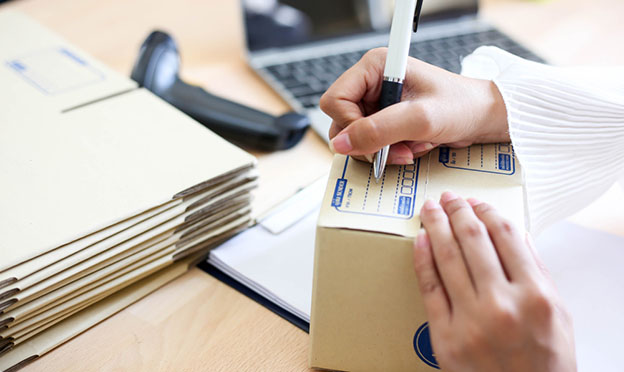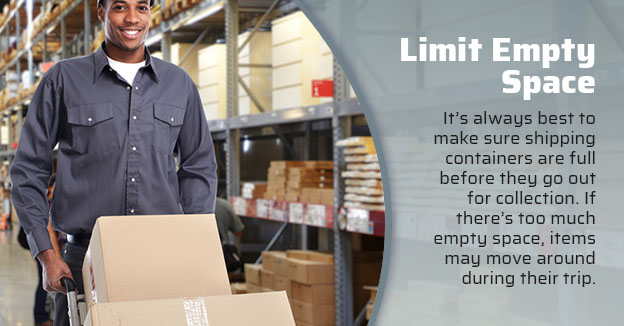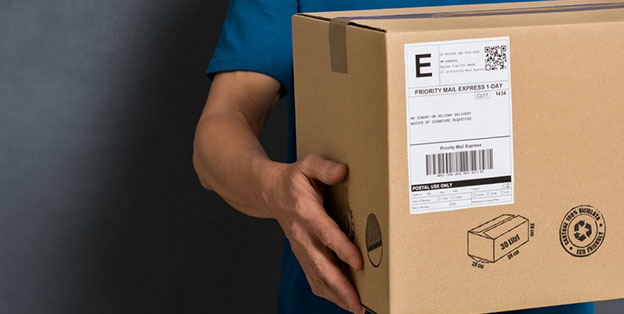
The gross annual revenue for the third-party logistics industry in the United States was valued at just under $200 billion in 2019. With more goods and products moving across the globe, more businesses and individuals are utilizing what’s known as freight forwarding services. For many companies and individuals, handing off their goods to a third-party logistics company is often much easier and more cost-efficient than shipping these products themselves, especially if these goods are traveling overseas or across international borders.
Freight forwarding companies typically have the expertise and experience to move products from one location to another. They are known for being on time, complying with federal and international regulations and providing a range of services that can help companies ship their goods with the utmost confidence. Those that are new to the world of freight forwarding should take a moment to learn about the ins and outs of preparing shipping containers, working with service providers and supplying the correct documentation.
What Is Freight Forwarding?
Freight forwarding is simply a way to move goods and products from point A to point B. In most cases, a business or individual will arrange to have their shipping containers picked up from a specified location. The freight forwarding company will ensure these goods are handled with care as they move toward their destination. The company will then hand off these goods to another company or individual once they’ve arrived at their destination.
A freight forwarding company hands off these shipping containers to another courier or logistics company. The length of the journey and the steps involved can also vary widely, depending on the types of goods being transported and the final destination. Some companies may need to prepare their packages for months at sea, while others may use freight forwarding services to move their packages within the continental U.S. Certain freight forwarding services may only transport specific types of goods, while others may cater to clients with dangerous goods, such as solvents, chemicals and flammable materials.
Freight forwarding services also offer a range of services to their clients, including real-time product tracking, storage, customs clearance, import and export documentation, packing and shipping insurance, so clients will be reimbursed for damaged inventory. These companies tend to take on several different roles in the logistics industry. Sixty-six percent of the firms that are active in the freight forwarding industry specialize in the arrangement and shipping of merchandise on behalf of shippers. Yet, another 26 percent of firms are consultants, facilitators or add value to the process in some other way.
The Benefits of Freight Forwarding
Many companies and individuals lack the expertise and experience needed to move their goods from one location to another. Depending on the length of the trip and the goods being transported, the shipper may face strict guidelines, regulations and other complicating factors that may throw them for a loop. That’s why many companies and individuals prefer to work with seasoned freight forwarding companies. These professionals understand the challenges and concerns involved in the shipping process. They know how to move through customs offices quickly and efficiently. Most freight forwarding companies are also well equipped to handle different packages and materials with care.
Working with a freight forwarding company can take the stress out of the shipping process for many companies and individuals. All the client has to do is prepare their package for shipment, leave it with the freight forwarding company and prepare their documentation. Most freight forwarding companies also offer shipping insurance, so their clients don’t have to worry about losing money due to mishandled merchandise or unexpected transportation issues.
Choosing a Freight Forwarding Company
When it comes to choosing a freight forwarding service provider, business owners should look for a company that caters to their specific needs and goals. Customers who use these services tend to consider and value a range of different factors. According to Logistics Trends and Insights:
- 22 percent of customers value low rates when looking for a service provider
- 22 percent value trade expertise
- 10 percent value the visibility of their cargo movements
- 18 percent value ease and timeliness in booking freight
If a business is looking to save as much money as possible, they may be looking for a freight forwarding company with the lowest possible rates, regardless of how they handle their merchandise. Companies that care about ensuring the safety and timeliness of their products may prefer to work with a service provider with more expertise, especially when shipping their goods to a distant or remote country. Other companies may need to monitor the location of their goods at all times, so finding a freight forwarding service provider with the latest tracking technology will be of the utmost importance.
Finding a freight forwarding service provider all depends on the needs and concerns of the company or shipper in question. Everyone has different priorities when moving their goods across the country or the globe. Business owners should assess their needs before looking for a freight forwarding company.
Freight Forwarding Best Practices
If a company chooses to use freight forwarding services, the company’s employees should use these tips to prepare their packages for shipment. Some freight forwarding service providers may take care of the packaging, labeling and documentation process, but others may ask the client to prepare their packages ahead of time.
Choosing a Container
Companies using a freight forwarding service need to place their items in proper shipping containers before sending them out for shipment. Choosing a container all depends on what kinds of items the company needs to ship.
Use a gaylord box for shipping fragile items, including consumer goods. If a company is looking to ship bulky or extremely valuable items, they may choose a wooden crate instead. Plastic totes can also be used to ship consumer goods, particularly food items, medicine and other perishable goods. Those looking to ship liquids, such as industrial solvents, detergents and hazardous chemicals, should use what’s known as an industrial bulk container, or an IBC tote.
Packaging Tips
Once the company has settled on a shipping container for their products and merchandise, team members may need to prepare these containers for the freight forwarding process. If the company does not follow proper shipping guidelines, their products may get damaged during shipment.
To package your shipping containers properly, follow these packaging tips:
- Limit Empty Space: It’s always best to make sure shipping containers are full before they go out for collection. If there’s too much empty space, items may move around during their trip. To keep items secure, use plastic foam, airbags and other shipping materials to limit empty space. It’s also important to find a container that fits the item in question, so there’s not as much room for the item to move around.
- Wrap Fragile Items Separately: Avoid putting fragile and non-fragile items in the same container, so they don’t damage each other. Every fragile item should be wrapped separately before being placed in a container.
- Place Heavier Items on the Bottom: Heavier items should be at the bottom of the container; otherwise, they may crush items underneath. Put the lightest items on top.
- Invest in Moisture Protection: If items are sensitive to moisture, it’s best to wrap them in shrink wrap before sending them out to a freight forwarding service. Packages may be exposed to rain, snow and condensation when traveling for long periods of time. Companies can also use waterproof containers, such as plastic totes, to protect merchandise from moisture.
- Use Additional Supplies When Shipping Packages Internationally: The farther a package travels, the higher the chances of it being damaged. When sending packages across international borders, use extra shipping materials to further insulate these containers.
- Distribute the Weight as Much as Possible: If there is too much weight on one side of the package, the container could easily tip over or fall to one side during transportation. It’s best to distribute the weight as much as possible to make these containers easier to handle. If necessary, put additional items in the same container to even out the weight.
- Shipping with an IBC Tote: When transporting liquids in an IBC tote, make sure the package has been thoroughly cleaned before sending it out for shipment. Examine the container for damage to keep liquids safe during transportation. Every IBC container should also come with a pallet attached to the bottom. This ensures each package is handled with care.
Labeling Tips
Before sending out a package to a freight forwarding service provider, make sure each package has been labeled correctly. If the freight forwarding company does not have access to this information or packages are labeled improperly, it could lead to costly delays, the company could incur additional charges and fees and packages may get lost or sent to the wrong address.
Every item should include the following information:
- Destination address and recipient contact information
- Departure address and sender information
- Shipper’s letter of instructions, including safe handling instructions
- Contents of the package
- Certificate of origin
- All relevant invoices and bank drafts
- Required documentation for international travel, including customs paperwork, bill of lading and the IPPC stamp for wooden shipping materials
- Dangerous goods forms, if necessary
These documents should be labeled and organized correctly to make sure the freight forwarding company has what it needs to deliver the package. They should be physically attached to the container or handed off to the freight forwarding company in a separate folder.
Transportation and Safe Handling Tips
When preparing packages for shipment, it’s also important to make sure the freight forwarding company has everything it needs to deliver these packages safely. Some freight forwarding companies may use their own shipping supplies to get containers ready for shipment, but this is not always the case.
Use these safe handling tips to ensure packages aren’t damaged during shipment:
- Use a Pallet: Large containers should have a pallet attached to the bottom so the freight forwarding company can use a forklift to safely transport these items. Smaller containers may be wrapped together and placed on a pallet to ensure packages aren’t lost or separated during transportation. Wooden pallets are typically used when shipping wooden crates, but plastic pallets are better for the environment and tend to be more resilient than wooden pallets.
- Inspect Containers Regularly: Before handing off shipping containers to a freight forwarding company, inspect the inside and outside of the containers. Shipping containers tend to wear down over time, so companies should complete this step before reusing their shipping containers. It’s also important to clean out containers before putting them back in rotation. If a company is utilizing used shipping containers, they should inspect and clean the container before using it to transport their products.
- Communicate with the Freight Forwarding Company: If the company has specific requirements for handling and transporting their containers, this information should be shared with the freight forwarding company. Proper communication is the key to success when working with a freight forwarding company. In addition to attaching safe handling instructions to the package, a representative from the company should have a conversation with the freight forwarding company to make sure they’re aware of these guidelines.
If the company fails to pass these guidelines along to the freight forwarding company, items may be damaged during transportation. The freight forwarding company may not be held liable for such damage if the client fails to provide safe handling information.
The freight forwarding industry is quickly picking up steam as the number of packages moving around the world continues to climb. Many companies will prefer to use freight forwarding services as opposed to packaging and transporting their goods themselves. When using freight forwarding services, companies should follow proper packaging and handling procedures. If a company fails to prepare their packages for shipment, their relationship with the freight forwarding company may suffer as a result.
Keep this information in mind when using freight forwarding services.





